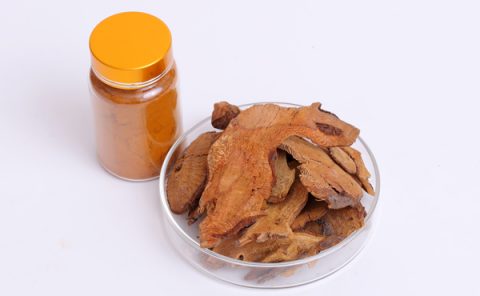
Emodin is a naturally occurring anthraquinone derivative, found in various plants, fungi, and lichens. It is known for its presence in traditional Chinese medicinal herbs like rhubarb (Rheum species), buckthorn (Rhamnus species), and knotweed (Polygonum cuspidatum)
Polygonum Cuspidatum Extract Emodin10%~98% HPLC
Botanical name: Polygonum Cuspidatum
Synonym name: Frangula emodin, Rheum emodin, Archin
CAS NO. 518-82-1
Chemical Name: 1,3,8-Trihydroxy-6-methylanthraquinone
Other Extract origins: Rheum palmatum Rheum palmatum L roots
Appearance: Orange needle crystal powder
Specification: 10%~98% HPLC
Molecular Formula:C15H10O5
Molecular Weight: 270.24
What is Polygonum cuspidatum?
Polygonum cuspidatum, a Chinese medicine name. For Polygonaceae Polygonum cuspidatum Sieb.et Zucc. Dry roots and roots. Spring and autumn harvesting, remove the fibrous roots, wash, and take advantage of the fresh-cut short section or thick slices, dried. Distributed in the northwest, east, central, south-southwest, and other places. With dampness Huang Huang, Qingrejiedu, stasis pain, cough, and phlegm effect. For damp-heat jaundice, leaching turbidity, vaginal discharge, rheumatism bit pain, carbuncle swollen sore, water, and fire burns, closed, Zhengjia, Fu injury, Hyperactivity cough.
Emodin Anthraquinones represent a large family of compounds having diverse biological properties. Emodin (1,3,8-trihydroxy-6-methylanthraquinone) is a naturally occurring anthraquinone present in the roots and barks of numerous plants, molds, and lichens, and an active ingredient of various Chinese herbs.
Function
- Emodin powder is used to promote blood circulation;
- Emodin powder is used to whiten and moisturize skin;
- Emodin powder with the function of anti-bacterial and anti-inflammatory;
- Emodin powder can eliminate pain and treat hangovers, sickness, and seasickness;
- Emodin powder prevents skin from being damaged by UV radiation and makes skin soft and elastic.
Application
- Applied in the cosmetic field, Emodin powder can be used not only for medical purposes but also for health care and daily chemicals.
- Applied in food additives, Emodin powder is also incorporated into natural pigments.
- Applied in the pharmaceuticals field, it is also incorporated into natural pigments.









